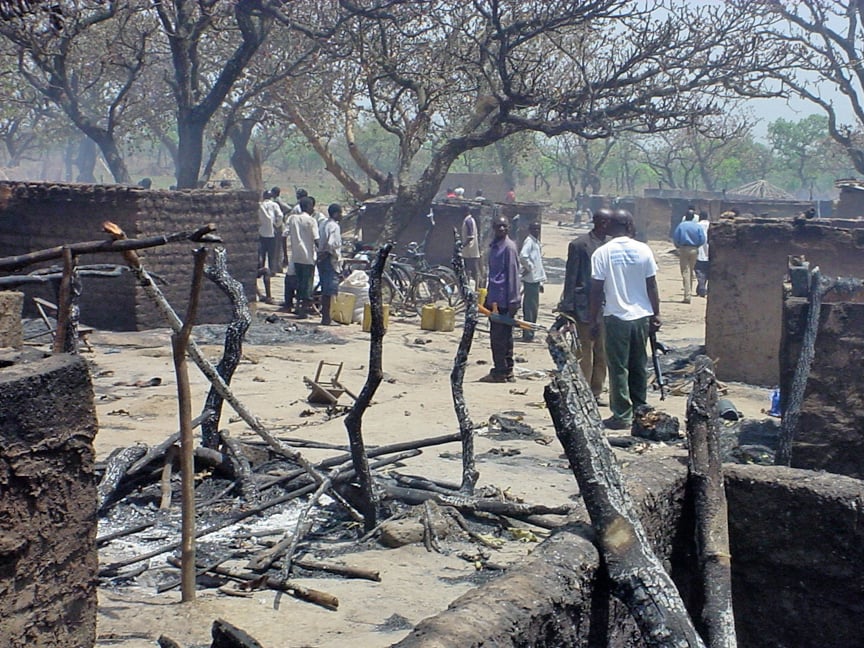Account of war in northern Uganda

LRA atrocities - Barlonyo IDP camp civilians killed, burnt huts. PHOTO | FILE
What you need to know:
- Review. War in Northern Uganda: A journalist’s Account by John Muto-Ono P’Lajur is a collection of articles from his reports that were published in newspapers from January to December 1997. Precious Delilah sheds more light on what the book is about.
War in Northern Uganda: A journalist’s Account is a collection of articles written between January to December 1997 by John Muto-Ono P’Lajur and published in The Monitor, now Daily Monitor.
Muto-Ono focuses on the war that broke out in northern Uganda briefly between the Uganda National Liberation Army (UNLA) which was the backbone of President Milton Obote’s second regime from 1980 to 1985 and the National Resistance Army (NRA) and then majorly on the Lord’s Resistance Army (LRA) led by Joseph Kony versus the NRA.
The book gives a moving scope on the impact of war in the northern region and the articles are a great resource for historians, researchers and the academia with a deep interest in war and the peace process.
Muto-Ono gives a detailed account of the one-year period characterised by bombings, ambushes, genocide, displacement, uncertainty, mourning and loss.
For more than 20 years, the northern region of the country was characterised by brutal attacks, greatly testing the military’s capabilities. In 1989, a rebellion began that soon blew out into a brutal struggle for power between NRA and the LRA and by 1997, it was fair to term the struggle a war. From the compilation one finds that northern districts were severely affected, especially Gulu and Kitgum, this is the year the author takes us through. A year that changed the northern region forever.
The unimaginable pain of people being forced to leave their homes to live in “gazetted protected villages” that had been set up by the government is still evident today, but it was the only way to safeguard the lives of the people, according to security forces at the time.
This left people’s land prone to grabbing, as the owners were forced into the gazetted villages guarded by UPDF as a way to single out the rebels.
The year 1997 was full of unimaginable fear, no one was safe, not even children. In every war, there are always people profiteering from it and in this case, the belief was that the army was, causing knife-sharp tension between the soldiers and the people of the north.
Efforts by Col James Kazini who had become a very popular figure to halt the assault by LRA rebels against unarmed civilians were unsuccessful. He led the 4th division of the UPDF as commander and he was both a sweetheart and a nightmare in the region during his reign in 1997.
Throughout the book, one fact that stands out is that northern Uganda fought this war alone, no other region seems to have been badly affected or even close to this war.
The now chief justice Alfonse Chigamoy Owiny-Dollo and Gen Salim Saleh were also popular figures in 1997. At the time, Dollo served as minister of state and Salim Saleh was the special presidential advisor on military and political affairs. They both made tremendous efforts to combat the war as well as helped war victims in the north. Wherever that spirit in them went, is question for another day.
At the bottom of every page in the book you will find footnotes. Here is where the true feelings of the people at the time and the opinions of the author lie. In his articles, he endures being objective and reports incidents as they are in his articles.
What we know is there is more to the articles contained in his book than what went on after 1997.
In this context, the book would deserve a different title because it only captures one year of the war.
However, objective the articles about the war are, we do not get to hear the perspective of Muto-Ono or what he went through during the war.
His journey as a journalist in that war and the experience of putting aside his fears to be the eyes and ears of the people is a vital part of the book that is missing. That makes the book a little plain, making it less of a “journalist’s account” and more of a compilation of articles.
The book has a few vivid descriptions of dead bodies, missing heads and riddled with bullets and abductees of the war.
That, however, should not scare you, although it will leave an image in your brain that will taunt you for a few hours. Generally, it is an interesting read for one with a keen interest in history. It offers a lot of background on the northern region and the impact of war.
To a smaller extent, it reveals the achievements of the government in stabilising or at least portrays their effort to stabilise the region.




